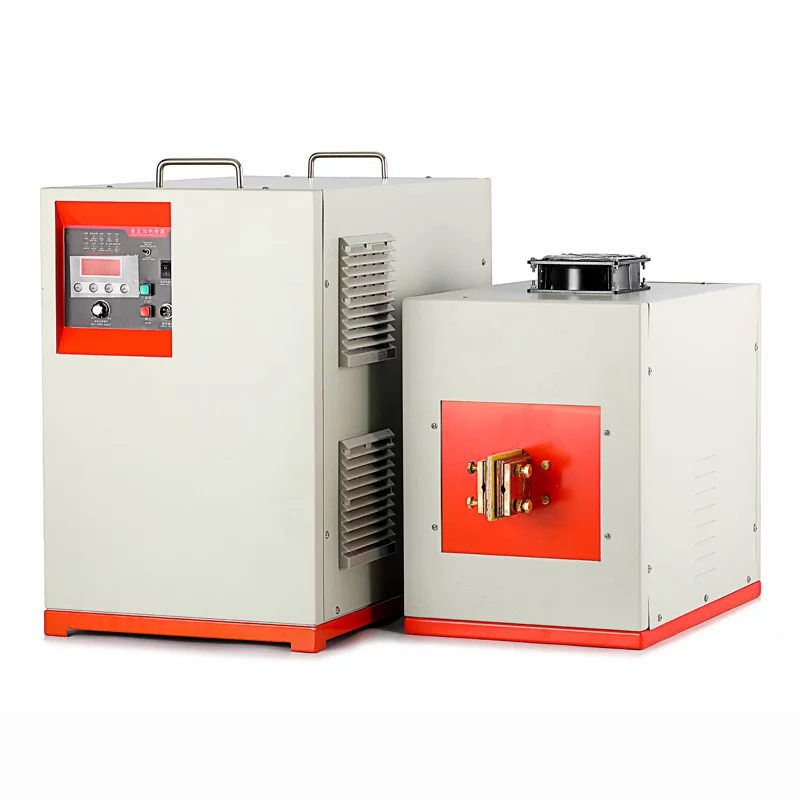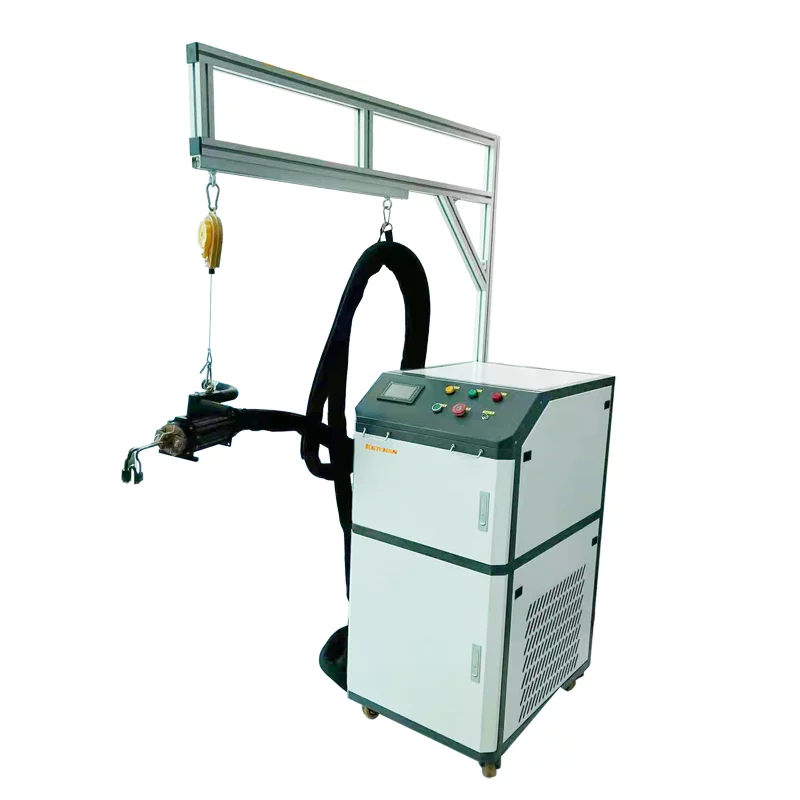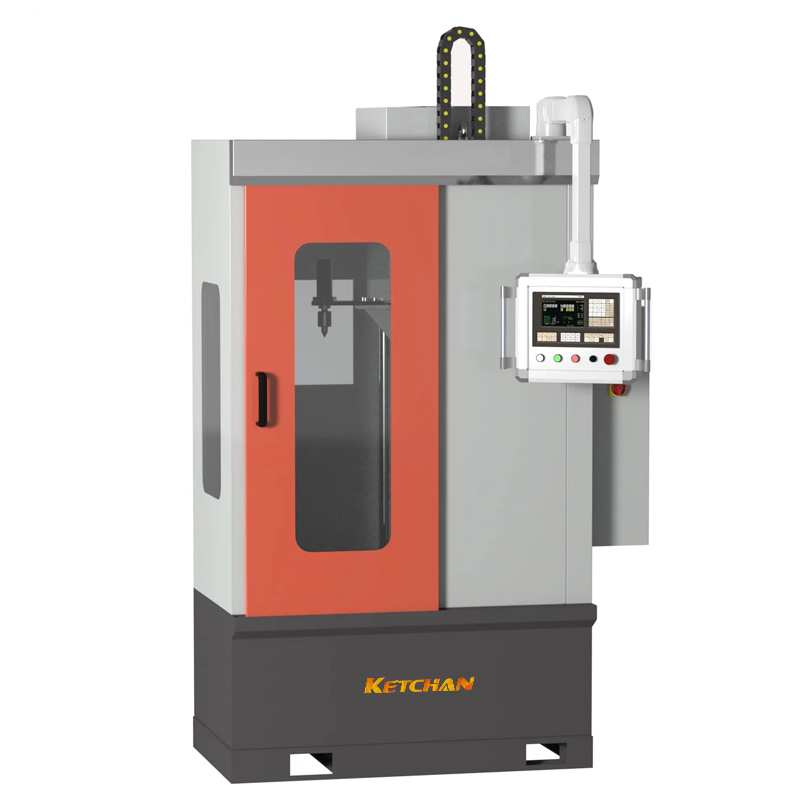In the process of refining steel, the carbon content in the molten steel in the vacuum furnace is often controlled in real-time. Some scholars in the metallurgical industry have introduced an example of using the information of waste gas to estimate the carbon concentration: the consumption, concentration, and flow rate of oxygen and argon in the vacuum vessel during the process of vacuum decarburization were used to estimate the carbon content in the molten steel.
There are also user-developed methods and related instruments for the rapid determination of trace carbon in molten steel: carrier gas is pumped into the molten steel and the oxidized carbon from the carrier gas is used to estimate the carbon content of the molten steel. A similar on-line analysis method is suitable for quality management and performance control in the steelmaking process.
Infrared absorption
The combustion infrared absorption method based on the infrared absorption method belongs to the special method for the quantitative analysis of carbon (and sulfur).
The principle is to burn the sample in the oxygen flow to generate CO2. Under certain pressure, the energy absorbed by CO2 is directly proportional to its concentration. Therefore, carbon content can be calculated by measuring the energy change of CO2 gas before and after flowing through the infrared absorber.
In recent years, infrared gas analysis technology has developed rapidly, and various analytical instruments that utilize the principles of high-frequency induction heating combustion and infrared spectrum absorption also appear rapidly. For the determination of carbon and sulfur by high-frequency combustion infrared absorption method, the following factors should be generally considered: sample dryness, electromagnetic sensitivity, geometric size, sample size, type, ratio, addition order and amount of flux, the setting of blank value, etc.
The method has the advantages of quantitative accuracy and less interference. Suitable for users who have high requirements for carbon content accuracy and have enough time for testing during production.
Emission spectrometry
When an element is excited by heat or electricity, it will transition from the ground state to an excited state, which will spontaneously return to the ground state. In the process of returning from the excited state to the ground state, the characteristic spectral lines of each element are released, and their contents can be determined according to the strength of the characteristic spectral lines.
In the metallurgical industry, the urgency of production requires the analysis of all the major elements in the water, not just the carbon content, in a very short time. The spark direct reading emission spectrometer has become the first choice in this industry because of its fast and stable results. However, this method has specific requirements for sample preparation.
For example, when analyzing cast iron samples by spark spectroscopy, it is required that the carbon on the surface of analysis be in the form of carbides, and no free graphite can be found, otherwise, the analysis results will be affected. The carbon content in cast iron was determined by the spark spectrum analysis method after the sample was made into a thin section by using the characteristics of rapid cooling and good whitening.
When analyzing carbon steel wire samples by SPARK spectrometry, the samples should be processed strictly and the samples should be placed on the spark table “upright” or “flat” with small sample analysis fixtures to improve the precision of analysis.
Emission spectrometry
When an element is excited by heat or electricity, it will transition from the ground state to an excited state, which will spontaneously return to the ground state. In the process of returning from the excited state to the ground state, the characteristic spectral lines of each element are released, and their contents can be determined according to the strength of the characteristic spectral lines.
In the metallurgical industry, the urgency of production requires the analysis of all the major elements in the water, not just the carbon content, in a very short time. The spark direct reading emission spectrometer has become the first choice in this industry because of its fast and stable results. However, this method has specific requirements for sample preparation.
For example, when analyzing cast iron samples by spark spectroscopy, it is required that the carbon on the surface of analysis be in the form of carbides, and no free graphite can be found, otherwise, the analysis results will be affected. The carbon content in cast iron was determined by the spark spectrum analysis method after the sample was made into a thin section by using the characteristics of rapid cooling and good whitening. Wavelength dispersive X-ray method
Wavelength dispersive X-ray analyzers allow rapid simultaneous determination of multiple elements.
Under X-ray excitation, the inner electrons of the atoms of the element under test undergo energy level transition and emit secondary X-ray (i.e., X-ray fluorescence). Wavelength dispersive X-ray fluorescence spectrometer (WDXRF) is a characteristic X-ray signal that is diffracted by a detector after crystal splitting. If the spectrometer and the controller move synchronously and constantly change the diffraction angle, the wavelength and intensity of the characteristic X-ray generated by various elements in the sample can be obtained, on which qualitative analysis and quantitative analysis can be conducted. This kind of instrument was produced in the 1950s, and it attracted much attention because it could carry out the multi-component simultaneous determination of complex systems. Especially in geological departments, this kind of instrument was successively equipped, which significantly improved the analysis speed and played an important role.
Wavelength dispersive X-ray method
Wavelength dispersive X-ray analyzers allow rapid simultaneous determination of multiple elements.
Under X-ray excitation, the inner electrons of the atoms of the element under test undergo energy level transition and emit secondary X-ray (i.e., X-ray fluorescence). Wavelength dispersive X-ray fluorescence spectrometer (WDXRF) is a characteristic X-ray signal that is diffracted by a detector after crystal splitting. If the spectrometer and the controller move synchronously and constantly change the diffraction angle, the wavelength and intensity of the characteristic X-ray generated by various elements in the sample can be obtained, on which qualitative analysis and quantitative analysis can be conducted. This kind of instrument was produced in the 1950s, and it attracted much attention because it could carry out the multi-component simultaneous determination of complex systems. Especially in geological departments, this kind of instrument was successively equipped, which significantly improved the analysis speed and played an important role.
However, the XRF analysis of light element carbon is often difficult due to its long wavelength of characteristic radiation, low fluorescence yield, and the absorption and attenuation of carbon characteristic radiation by the matrix in heavy matrix materials such as steel and iron. In addition, when measuring carbon in steel with an X-ray fluorometer, if the ground sample surface is measured 10 times continuously, it can be found that the carbon content value is increasing continuously. Therefore, the application of this method is not as broad as the first two.
Nonaqueous titration
Non-aqueous titration is a method of titration in a non-aqueous solvent. The method can titrate some weak acids and bases which could not be titrated in an aqueous solution. The carbonic acid produced by CO2 in an aqueous solution is less acidic and can be titrated accurately by selecting different organic reagents.
The following is a common non-aqueous titration method:
(1) Samples by carbon and sulfur analyzer supporting the arc combustion furnace high-temperature combustion.
(2)Carbon dioxide gas released by combustion is absorbed by ethanolamine solution, carbon dioxide, and ethanolamine reaction to produce relatively stable 2-hydroxyethyl amine carboxylic acid.
(3)Use KOH to titration a non-aqueous solution.
The reagent used in this method is toxic, long-term exposure will affect human health, and difficult to operate, especially when the carbon content is high, the solution should be prepared, a little attention will run carbon, resulting in low results. The reagents used in non-aqueous titration mostly belong to inflammable substances, and the experiment involves high-temperature heating operation, so the operator should have enough safety consciousness.
Chromatography
The flame atomization detector is used in conjunction with gas chromatography, where the sample is heated in hydrogen and the gas emitted (e.g., CH4 and CO) is then detected by flame atomization detector – gas chromatography. A user used this method to test the trace carbon in high purity iron, the content was 4 g/g, the analysis time was 50min.
This method is suitable for users with very low carbon content and high requirements for detection results.
Electrochemical method
Have introduced the user alloy with low carbon content is determined by using potential analysis: the iron sample after oxidation in induction furnace, using potassium carbonate of solid electrolyte electrochemical determination of gaseous product concentration cell analysis, thus measuring the concentration of carbon, this method is especially suitable for the determination of the very low concentration of carbon, but by changing the reference gas composition and the oxidation rate of sample control precision and sensitivity analysis.
This method is rarely used in practice and mostly stays in the experimental research stage.
Online analysis
In the process of refining steel, it is often necessary to control the carbon content in the molten steel in the vacuum furnace in real-time. Some scholars in the metallurgical industry have introduced an example of using the information of waste gas to estimate the carbon concentration: using the consumption, concentration, and flow rate of oxygen and argon in the vacuum vessel during the process of decarburization, the carbon content in the molten steel was estimated.
There are also user-developed methods and related instruments for the rapid determination of trace carbon in molten steel: carrier gas is pumped into the molten steel and the oxidized carbon from the carrier gas is used to estimate the carbon content of the molten steel.
A similar on-line analysis method is suitable for quality management and performance control in the steelmaking process.





